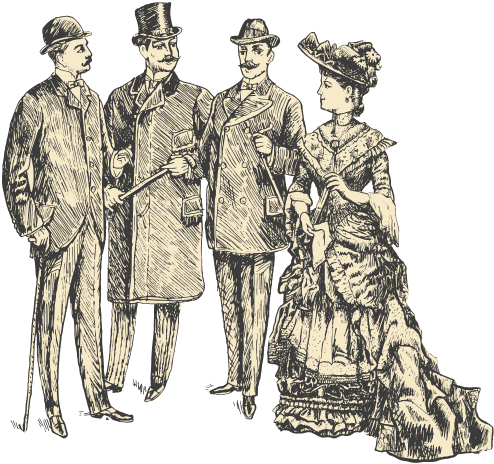Gotcha!
Happy April Fools’ Day, the sacred holiday of pranksters and goofballs the world over. To celebrate, we’ve dug up five amazing pranks from throughout history. And while you really, really shouldn’t trust most of what you see on the Internet today, we promise you: All of these tricks actually happened!
Linguini Lies
In 1957, the BBC documentary show Panorama aired a spoof segment featuring Swiss harvesting spaghetti from trees. It’s a story almost as unbelievable as the moon being made of cheese…and yet the impasta spot did the trick. Hundreds of Brits called into the network asking how they could get their own noodle trees.
If anyone asks, we’ve heard grated moon is fantastic on fresh pasta…
Han vs. the Nazi
Dutch painter Han van Meegeren was a rare double threat: career criminal and national hero. A failure as an artist in his own right, van Meegeren took to forging paintings. He proved to be such a good faker, in fact, that art critics hailed his work as exquisite—and genuine. He made millions selling forgeries of some of the world’s most famous paintings.
During World War II, he pulled one over on Nazi leader Hermann Goring, who forked over 137 authentic paintings in exchange for one painting by famed Dutch master Johannes Vermeer. When van Meegeren revealed years later that he’d sold the Nazi a fake of his own making, he earned instant celebrity…and a conviction for forgery.
A Titanic Prank
Businessman Dick Smith raised eyebrows in his native Australia when he promised to tow an honest-to-goodness iceberg into Sydney Harbor as a new source of fresh water for the city. He raised them farther, no doubt, when he appeared to deliver on his preposterous promise.
On April 1, 1978, an iceberg floated in Sydney Harbor. Sydney was abuzz about the slow-moving mountain of ice, dubbed the Dickenberg I. But then it started to rain, and the sham was revealed: The iceberg was just a barge covered in white plastic sheeting, firefighting foam, and shaving cream. Ice work, Dick.
Colonial Catfish
If Benjamin Franklin were alive today, his alter ego, Silence Dogood, would make for a great episode of Catfish.
As a teen, Franklin couldn’t get his writing published in the New-England Courant, a newspaper founded and published by his brother. (That’s cold, bro.) So he invented the identity of a middle-aged widow, Silence, and succeeded in getting his 14 letters published under her name. In response, the Courant received several written marriage proposals for Mrs. Dogood. Sorry, fellas, but this is not the bride you’re looking for.
They Were Lion
Perhaps the earliest April Fools’ Day prank in recorded history took place in London on April 1, 1698. On that day, crowds flocked to the Tower of London to witness the annual “Washing of the Lions” they’d been hearing about the past few days, and to which some even held tickets.
Now, the tower did house various animals, including leopards, elephants, and lions. But there was no annual lion-cleaning party. The mane event was just a prank—one that locals pulled for years on the uninformed.
